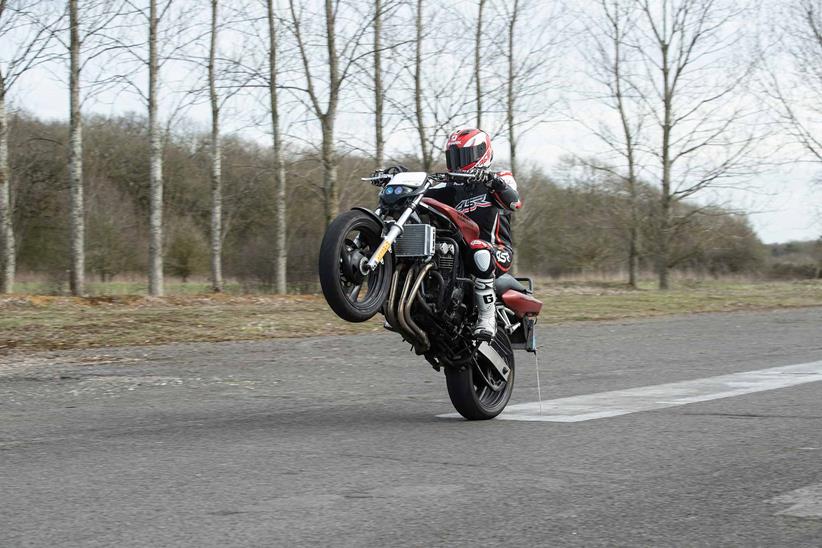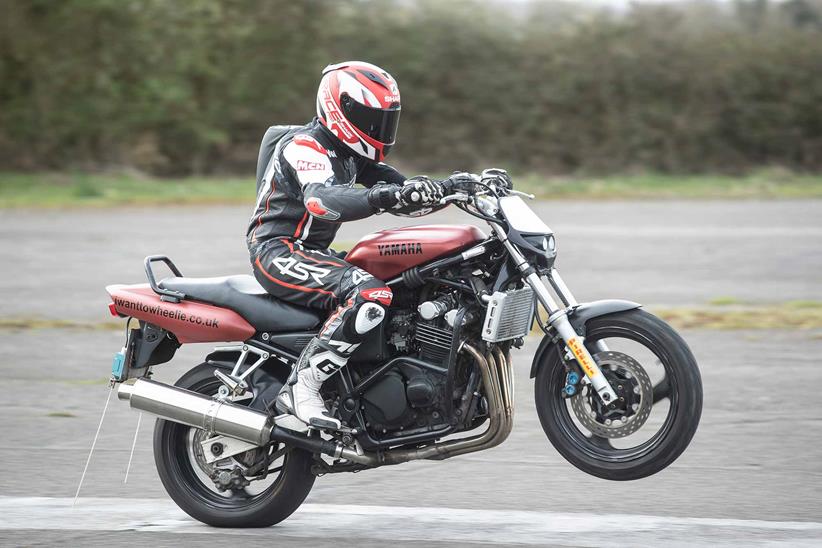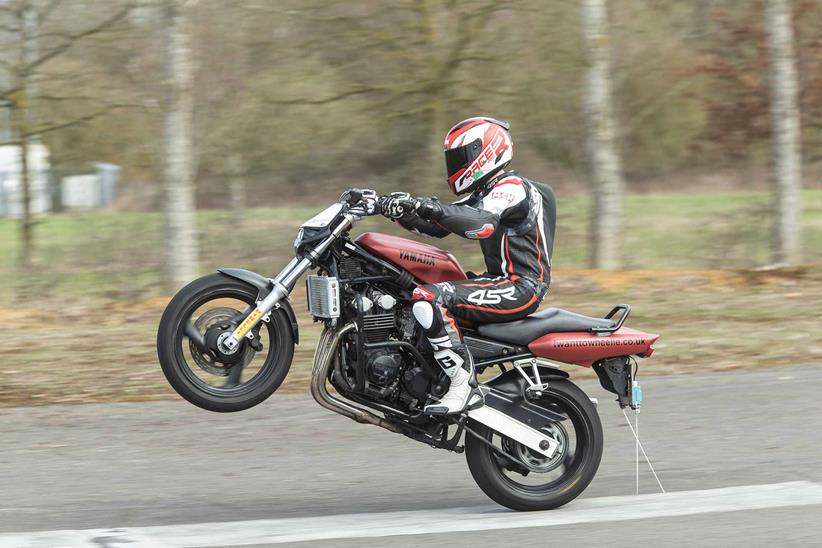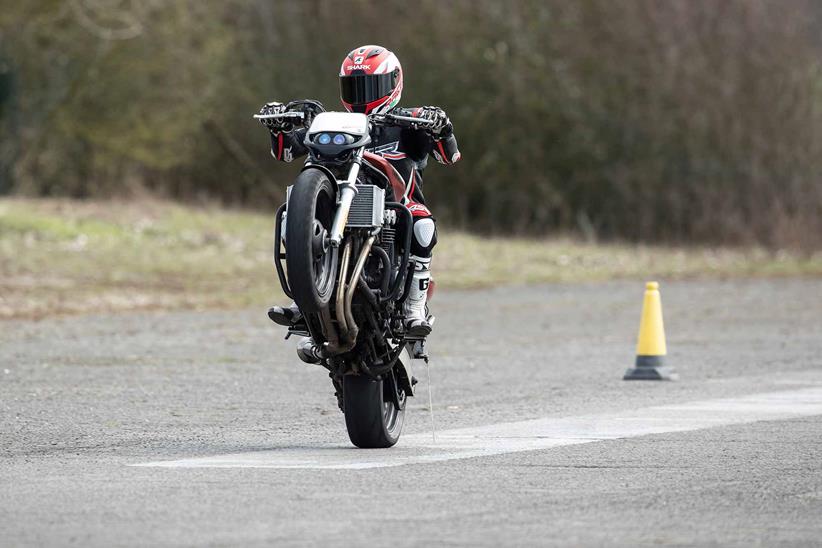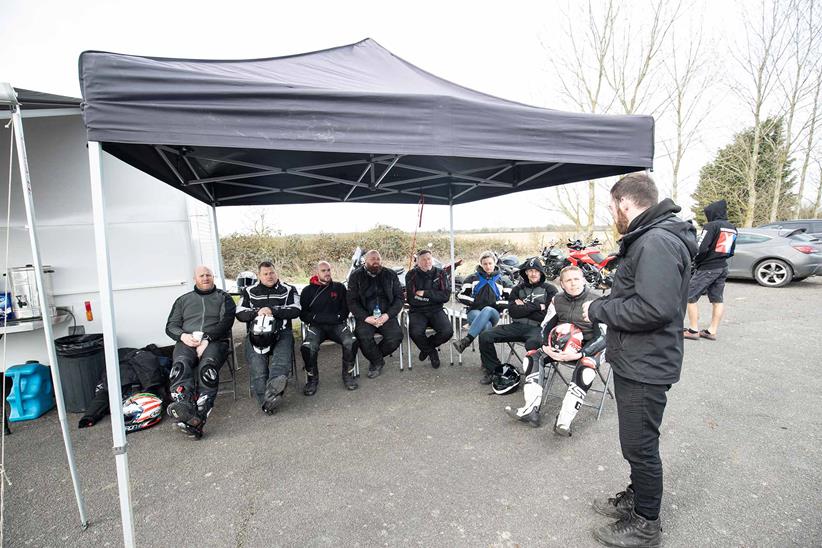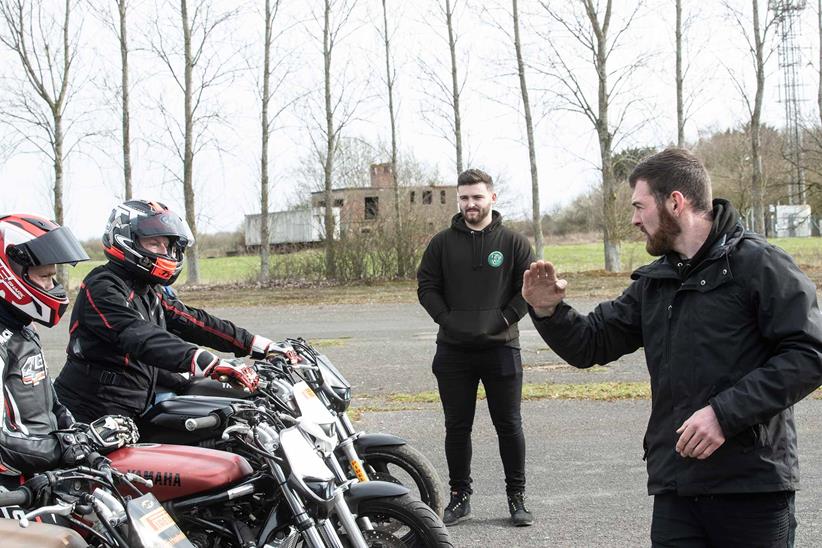How to wheelie a motorbike
A wheelie is the oldest motorcycle trick in the book, and I’ve wanted to be able to pop a decent one since I first threw my leg over a bike aged 16. After seven years of riding, I was still unable to pull one off, which is where the team at I Want to Wheelie come in.
Set up in 2001, they’ve taught thousands of motorcyclists the art of safe wheelies at Finmere Aerodrome, transforming timid riders with no experience into one-wheeled acrobats after just a single £200 day of tuition. No licence is needed, just competence on a motorcycle.
I’m among eight people at today’s school, with modified Yamaha FZS600 Fazers shared between the group. Placed on the runway’s main straight are two red cones, two yellow cones around four bike lengths beyond that, and then a final yellow cone around 60 metres further still. These are our markers for the day’s single-wheel education.
![]()
Learn to wheelie for better control
“We train a lot of emergency workers including police and ambulance, just because they want a higher level of control,” says instructor Evan Millhouse. “A woman last week was actually recommended by the BikeSafe course to come here.
“They see it as a good thing and although it is illegal on the road, it does happen, especially with the power of modern bikes. So if you can control it and put it down in a safe manner, rather than in a big tank-slapper, I’d say it’s definitely a benefit to have the skill.”
Once the bikes are warmed up, the next stage is to get used to accelerating hard in first gear, snapping the throttle open aggressively as you pass between the first set of red cones to halfway between the two yellows and the final yellow.
Gripping our knees around the tank, we’re instructed to remain upright, rather than leaning forwards, and to maintain relaxed arms as it’s this position that allows you to control the bike once the front wheel is airborne.
We have lift-off! Wheelies for beginners…
![]()
Evan and his team teach wheelies by using the technique of using the weight transfer of the bike as it accelerates, as it’s less brutal than ‘clutching it up’.
So I crack the throttle wide open at the red cones, then close it to around 50% at the two yellow cones, which compresses the forks, then immediately snap it back open as hard as possible, using the combined effect of the fork rebound and acceleration to rotate the bike around the rear spindle and hopefully lift the front wheel off the floor.
At first, the plan is to just raise the front wheel slightly and bring it back down in a controlled manner. The subsequent sessions are about increasing height, confidence and throttle control for a prolonged wheelie.
Improving your throttle control
![]()
By lunchtime, I’ve gone from no wheelies to seeing the front wheel rise higher than I thought I was capable of and am already counting down the minutes to going higher and further by improving my throttle action.
This turned out to be the most frustrating part of the day. Applying more gas once in flight seems counter-intuitive at first, but knowing I’ve got the safety rods to prevent any unwanted altitude errors gives me the confidence to add more throttle.
A couple of sweary runs later and it all starts to come together. Although there is still the occasional flop, I feel like I’m starting to get the knack of it and find myself racing back around the course for another go, dreading the moment they call time on the day’s proceedings.
Overall, though, it was a childhood dream realised and, better still, with no risk of losing my licence or flipping my bike. Can I have another go, please?
Building a wheelie bike
Although appearing to be largely standard FZS600 Fazers, the team have made a number of changes to cater for learning the art of wheelies. They are below:
- The standard clocks and headlight have been removed, there’s a set of stronger aftermarket Renthal bars and a pair of lighter headlights
- To cut weight, one of the front discs and calipers have been removed. This also prevents unwanted lowside offs when slowing down from each run
- For protection, a crash cage surrounds the engine and chassis. The bikes use standard engines and gearing to ensure tuition can be translated to other conventional road bikes
- For a larger contact patch, rear tyre pressure has been dropped. No extra weight has been added to the rear, but there are two thin rods which protrude from the number plate bracket. Designed to touch down during wheelies, the longer rod cuts the engine’s power by 50%. If the shorter rod touches, 100% is cut to prevent flipping. The rods are shortened throughout the day as control increases
Where to pull wheelies:
There are plenty of wheelie schools currently operating in the UK – why not try out one of these:
- I Want to Wheelie Learn how to wheelie with Evan and the team at Finmere Aerodrome in Buckinghamshire. www.iwanttowheelie.co.uk
- Extreme Wheelie Learn to wheelie on Yamaha MT-07s and MT-09s at Rufforth Airfield near York. www.extremewheelie.co.uk
- Wheelie days Learn to wheelie on KTM Duke 390s at the only wheelie school in Wales. www.wheeliedays.com
- Stunt Asylum wheelie school Learn to wheelie on school bikes at Dunsfold Park, Surrey or North Weald, Essex. www.stuntasylum.com
